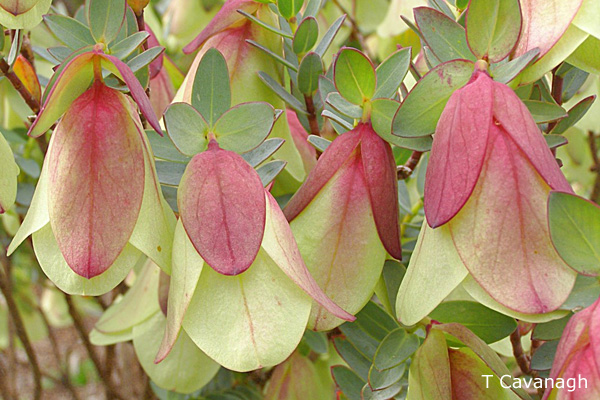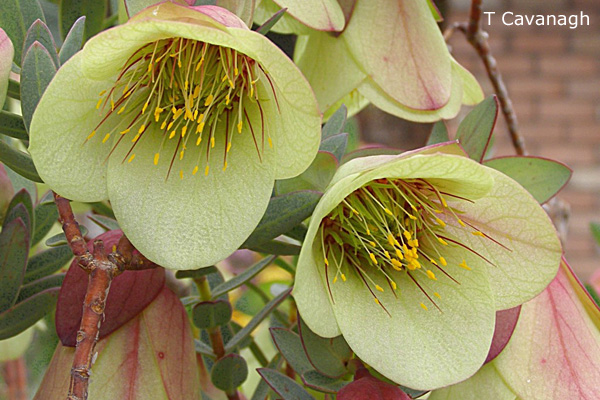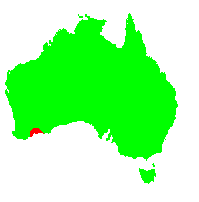General Description:
Pimelea is a genus of about 80 species, most of which are Australian but some also occur on islands to the north and in New Zealand. Most are shrubs but some annual species are found in tropical areas. The name “rice flower” has been applied to many members of the genus, a few of which are cultivated to a limited extent.
Pimelea physodes is arguably the most spectacular member of the genus due to its large, pendant flower heads. It is prized as a cut flower.
It is a small, erect shrub to about 1 metre high with oval shaped leaves to about 10 mm long by 6 mm wide. The small flowers occur in clusters at the ends of the branches and are enclosed by leafy bracts which produce a large, pendent, flower head giving a bell shape similar to some of the Western Australian darwinias (which are not related). The bracts may be yellow, green, red or purple in colour. Flowering occurs in winter and spring.
This species has been widely exploited for cut flowers by bush picking. However, with restrictions now in place to eliminate bush picking, a considerable amount of research has been undertaken into cultivation requirements for the species. In Western Australia, successful cultivation has been achieved in well drained, acidic soils (sand over gravel at 0.5 to 1 m, deep sand or sandy loam). A position protected from full sun is preferred for best quality flowers. The species is difficult to maintain in the humid summer conditions of the east coast of Australia but this is being gradually overcome through grafting of the species onto hardier root stocks.
Pimeleas, generally, are difficult to germinate from seed but some success has been achieved through treatment with smoke or smoked water. Cuttings are successful but care needs to be exercised in removing leaves from the lower parts of the cuttings as tearing of the thin bark of the stems is likely if leaves are stripped off. Grafting experiments would be worthwhile using root stocks of other Pimelea species that are hardy in the locality where the plant is to be grown.
* EPBC Act = Environment Protection and Biodiversity Conservation Act 1999;
ROTAP = Rare or Threatened Australian Plants (Briggs and Leigh, 1988)
For further information refer the Australian Plants at Risk page

Pimelea physodes
Photos: Tony Cavanagh

Pimelea physodes
Photos: Tony Cavanagh

Seldom seen, the tiny flowers and flower parts inside the bracts.
Photo: Tony Cavanagh
Other Native Plant Profiles
 Australian Native Plants Society (Australia)
Australian Native Plants Society (Australia)